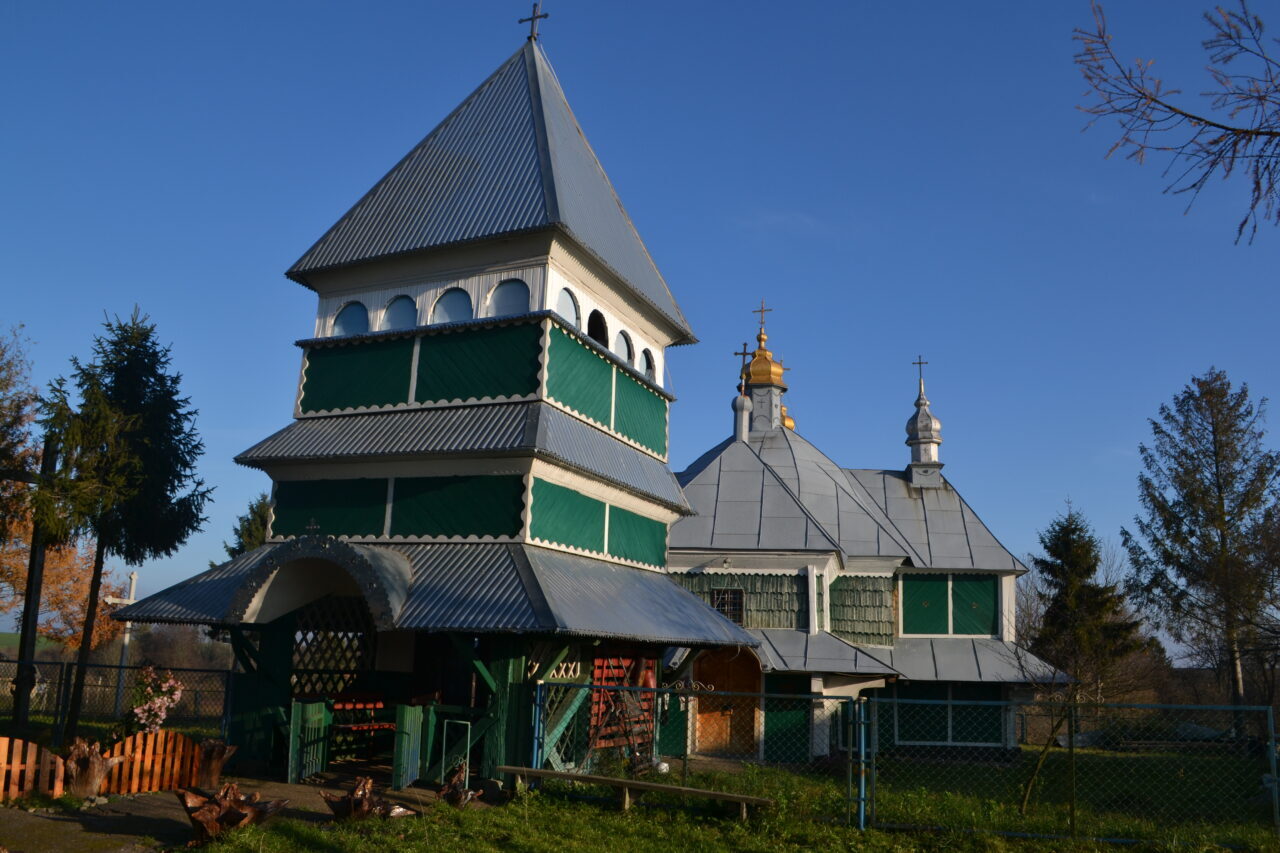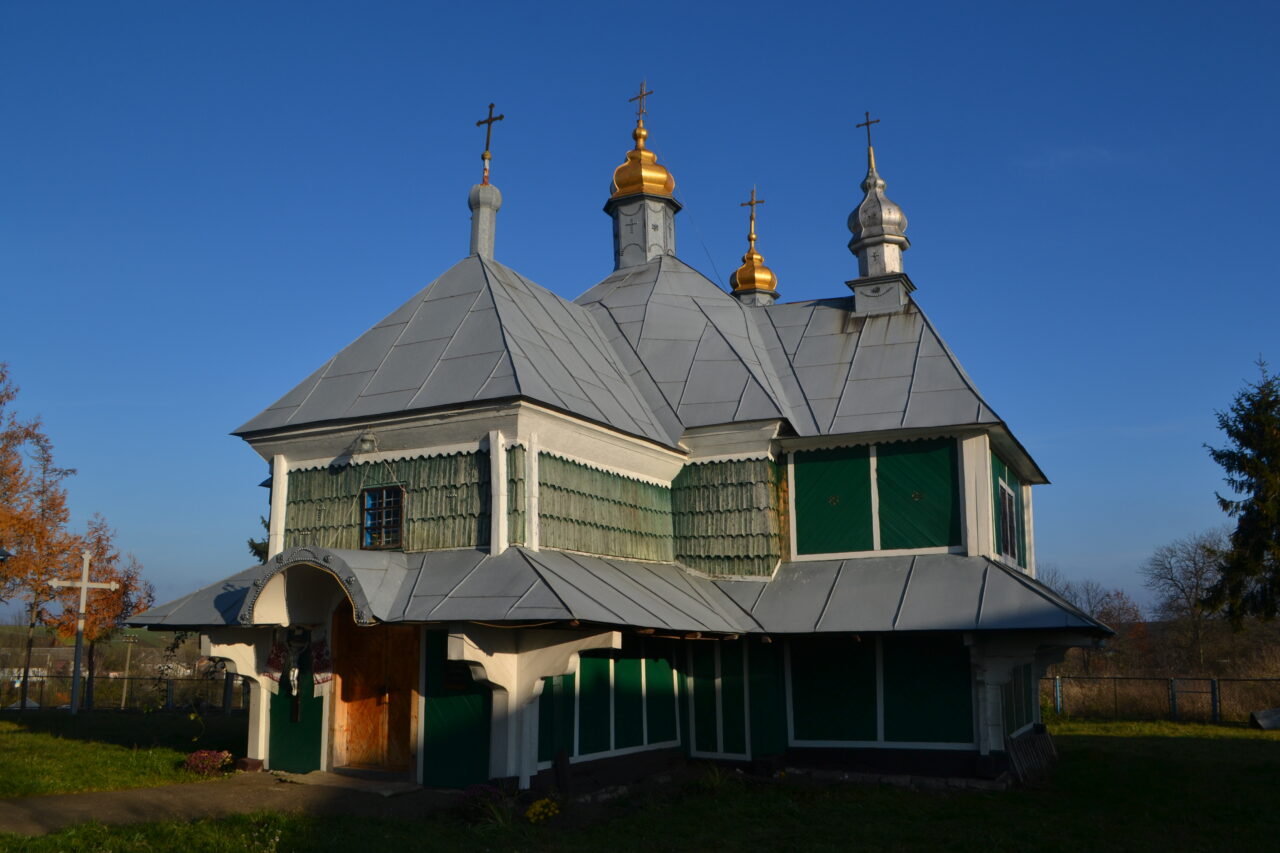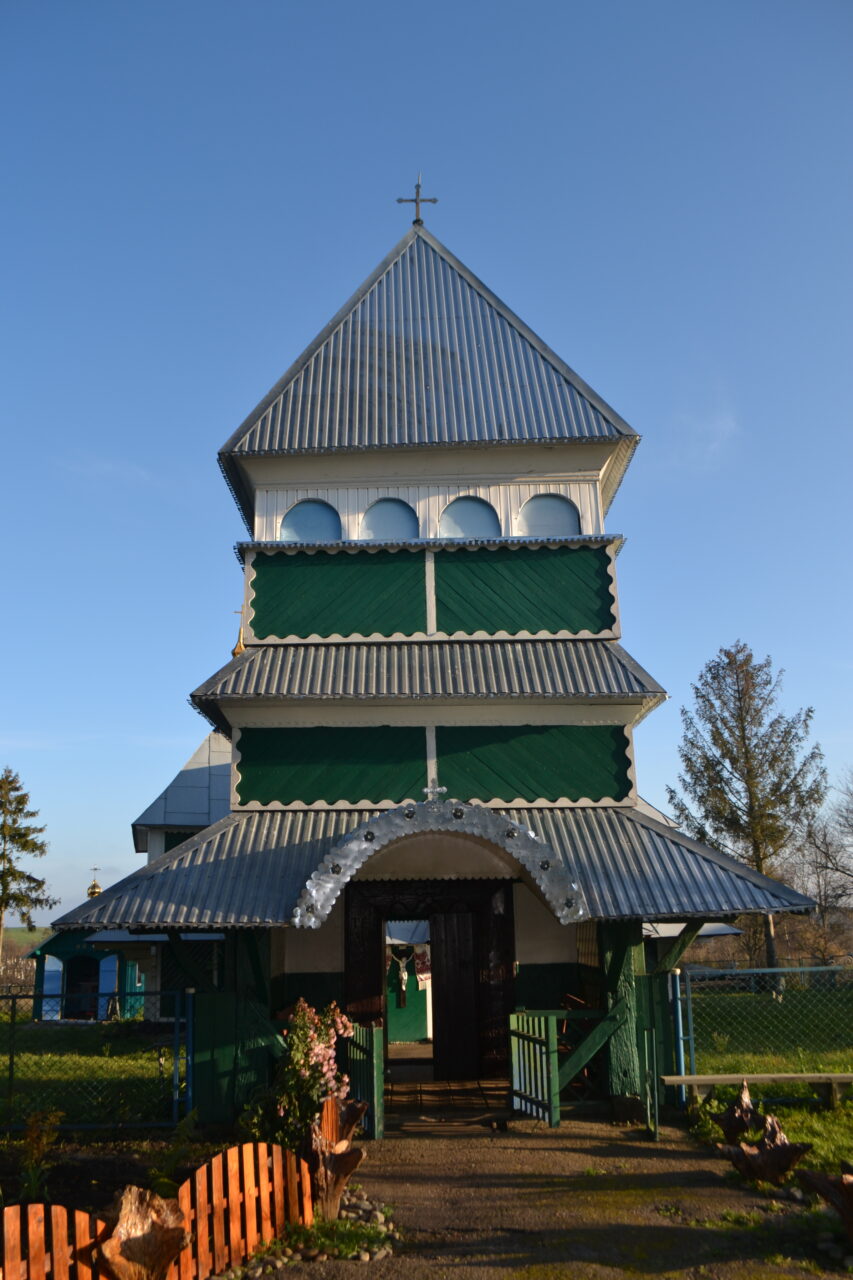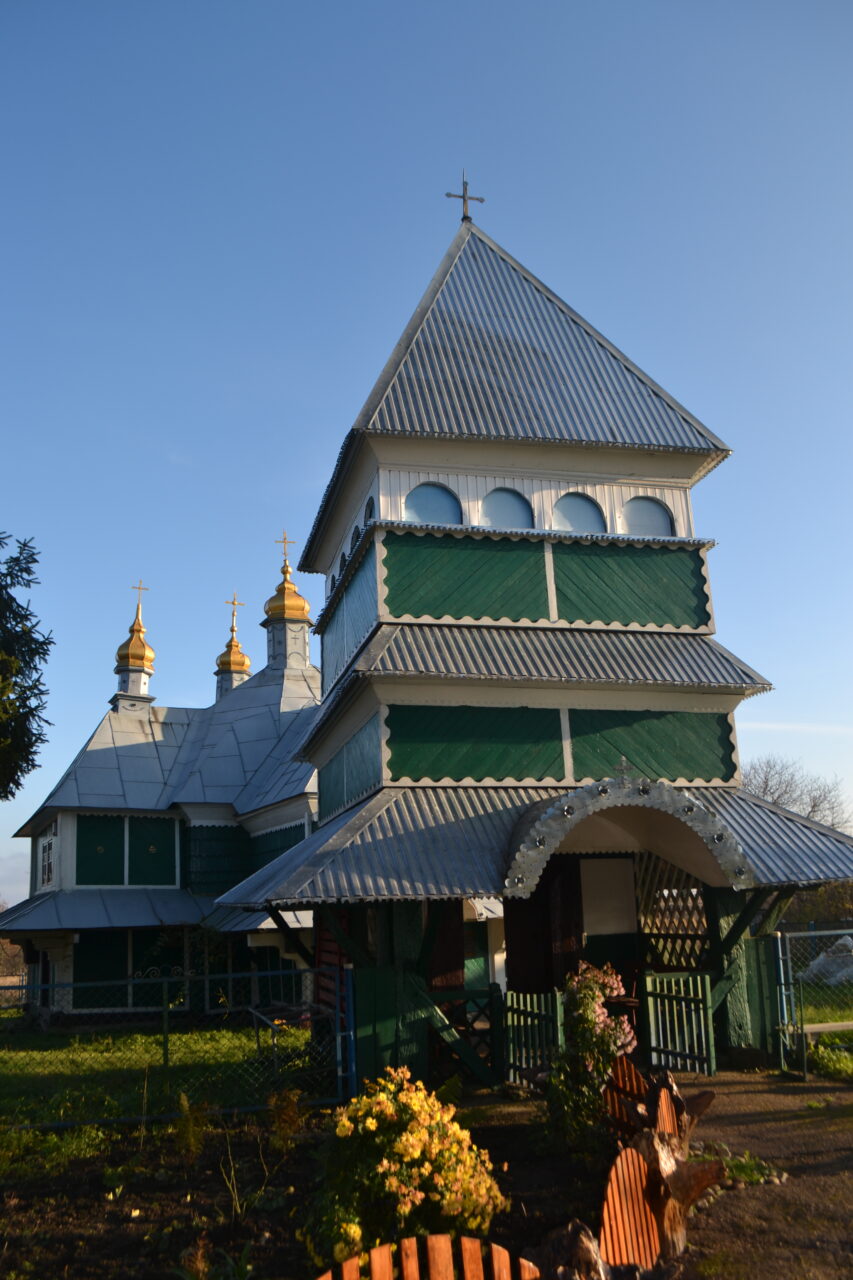The true life story is, if a person has done something valuable, you will definitely forgive them some blunders, for the sake of something that used to be respectful, graceful, and powerful.
The same story there is with Makhnivtsi village in Zolochiv region. Now the wooden Cosma and Damian church resembles not so much of an architectural monument as an exhibition of modern building monuments achievements. Although there are very few churches of this age in Galicia, and the church should be proud of its status and look like a monument, which appeared only at the end of the 17th century, in 1697, is supposed to.
This exact date is known from the carved on the door frame numbers. The temple is cross in plan, the main dome is octagonal. The side aisles and the narthex are covered with three-faced tops with small domes on the top.
You would never say the temple is over 300 years old, but this is not a compliment. All four tops are covered with gray tin, the walls are hidden under… what do we have here, Ondulin, boards, lining or something else from modern materials? Our old temples impress with tiny windows, as glass was a pricey material, poor villages did not have enough money to glaze large windows. In Makhnivets the windows are of usual (from the modern point of view) size. Thus, they were scattered in a later period, authenticity was mocked. The time when it happened is unknown, as the temple has undergone several major repairs and expansions, the first of which took place in the 18th century. The latest professional restoration took place in 1970. As if the scattered windows weren’t enough, the walls have also been painted deep green. Emerald, psychologists say, calms down, but in Makhnivtsi you regret not having a bottle of valerian with you on a trip. You don’t feel like rushing to the village to look for a pharmacy, as the church is located at the very entrance to Makhnivka, to the right of the road, before the village streets begin.
The interior can compensate for the sanctuary appearance. If you are lucky to look inside, you will see a real artistic treasure. It is a four-tiered baroque carved altar. Its author is a well-known Galician master of icon painting, a talented Yov Kondzelevych. The artist created this iconostasis in 1720-1722 by order of the Lutsk bishop Yosyp Vyhovskyi, who was Ivan Vyhovskyi’s, the hetman of the Cossak Hetmanate State, grandson. The elegant carved décor was made by another master, an engraver Ivan Karpovych.
The walls retain the remains of polychromic from the 18th century.
It is widely known that before Zolochiv region came under The Soviet Union jurisdiction in September 1939, count Yurii Pototskyi from Pomoriany (the castle is near Makhnivtsi) had taken care of the church in the small village.
The old church bell tower looks beautiful and authentic. Here you can see how natural, beautiful and subtle wooden folk architecture can be. The bell tower color, the neat shingles rows on the steep roof and graceful silhouette of the third-tier gallery arcade – everything gladdens the eye. Some art critics believe the bell tower is even older than its neighbor church, and used to perform certain defensive functions. In case of enemy attacks it could have served as a fortress tower.
In the village there is a legend that both the bell tower and the church were built on the site of much older temple buildings, which burnt down during one of the frequent Tatar raids in this area. The villagers wanted to resume worships soon as possible, but the wooden temple construction is a long process, it is necessary to have timely and correctly cut wood: logs for log houses and chipped shingles for roofs. The issue was solved in this way: a wooden chapel from a nearby forest was transported to Makhnivka. There the villagers prayed for a while. Later another tie was added to the chapel, and it became a bell tower of the temple. It is known that the forest chapel was built by a master from Pomoriany.
For the sake of the bell tower itself, you should visit this small Opillia village on the border between Galicia and Podillia, and, of course, the iconostasis beauty is worth visiting it as well.




